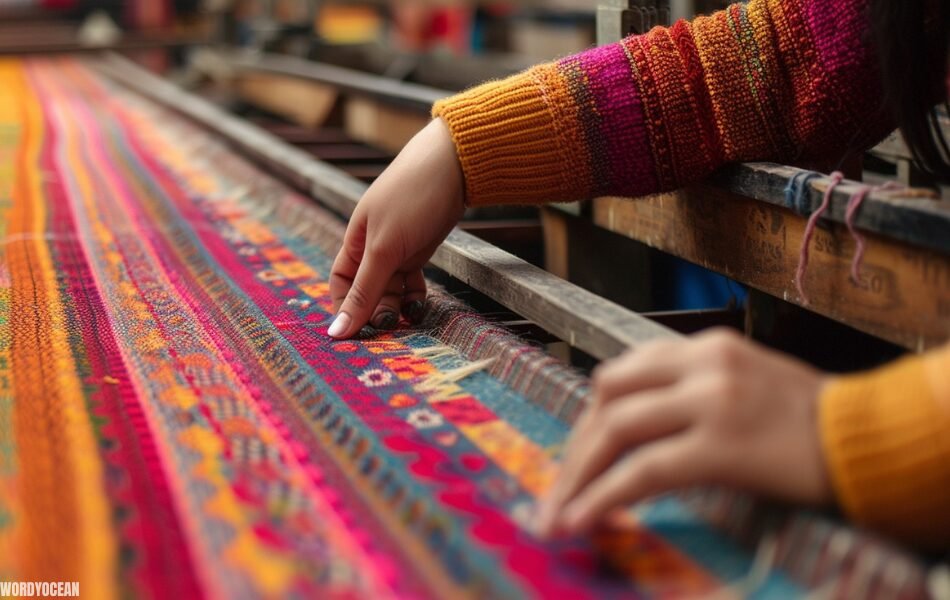Kashito_Toto: Unraveling the Beauty of Traditional Textile

Have you ever wondered about the intricate beauty of Japanese textiles? Hidden within the rich tapestry of Japanese culture lies a fascinating art form known as kashi tototo. This ancient technique, often overlooked in the modern world, offers a glimpse into the delicate artistry and cultural significance of traditional Japanese textiles.
Kashito_toto is a specific type of weaving that involves creating intricate patterns and designs by interlacing colored threads. This meticulous process results in stunning fabrics that have been admired for centuries. The technique is characterized by its use of supplementary weft threads, which are woven over and under the warp threads to create the desired pattern.
The beauty of kashito_toto lies not only in its visual appeal but also in its historical and cultural significance. This traditional craft has been passed down through generations, with skilled artisans meticulously mastering the techniques required to produce these exquisite textiles.
The Origins of Kashito_Toto
The roots of kashito_toto can be traced back to ancient Japan, where textile arts flourished. This intricate weaving technique emerged during a time when textiles were not merely functional items but also symbols of status, wealth, and cultural identity.
Historically, kashi toto was often used to create ceremonial garments, such as kimonos and obi, for the nobility and the imperial court. The intricate patterns and rich colors of these textiles were a testament to the skill and artistry of the weavers. Beyond their aesthetic appeal, kashito_toto fabrics often carried symbolic meanings, representing auspicious motifs or natural elements.
While kashito_toto has its origins in ancient Japan, regional variations have emerged over time. Different regions developed their unique styles and techniques, influenced by local traditions and cultural preferences. For instance, the kashito toto produced in Kyoto may exhibit delicate floral patterns, while those from Osaka might feature bold geometric designs. These regional variations contribute to the rich diversity of kashito_toto and highlight the creativity of the artisans who have kept this tradition alive.
The Art and Technique of Kashito_Toto
The artistry of kashito toto lies in its intricate weaving techniques. To create these stunning textiles, skilled artisans employ a variety of methods that require precision and patience.
One of the key techniques in kashito_toto is the use of supplementary weft threads. These threads are interwoven with the warp threads to form the desired patterns. By carefully manipulating these threads, weavers can create a wide range of designs, from simple geometric motifs to complex floral arrangements.
To embark on the journey of kashito_toto, artisans require a few essential tools and materials. These include a loom, a shuttle, and high-quality threads. The choice of threads is crucial, as different types of threads can affect the texture and appearance of the final fabric. Silk, cotton, and linen are commonly used materials for kashito toto.
While it’s challenging to provide a comprehensive step-by-step guide for kashito toto in a written format, understanding the basic principles can be helpful. The process typically involves warping the loom, threading the shuttle with the supplementary weft threads, and then weaving the pattern. Each step requires meticulous attention to detail and a deep understanding of the technique.
It’s important to note that mastering kashito toto is a time-consuming process that often involves years of practice. However, the rewards are immense, as the ability to create beautiful and intricate textiles is a truly unique skill.
Kashito_Toto in Modern Times
While kashito toto has deep historical roots, it continues to captivate hearts and minds in the contemporary world. Its enduring appeal can be attributed to its versatility and timeless beauty.
In modern times, kashito_toto has found new applications beyond traditional garments. Contemporary designers are incorporating kashito toto techniques into their creations, infusing traditional artistry with modern aesthetics. From fashion accessories to home decor, kashito_toto is making its mark on the global stage.
Recognizing the importance of preserving this cultural heritage, various organizations and individuals are dedicated to preserving and promoting kashito toto. Workshops, exhibitions, and educational programs are organized to teach the next generation of artisans. Additionally, efforts are being made to document the techniques and designs of kashito_toto to ensure its legacy for future generations.
As we look to the future, the potential for kashito_toto is vast. Innovative designers may experiment with new materials and techniques, pushing the boundaries of this traditional art form. Collaborative projects between experienced artisans and contemporary designers could lead to exciting new interpretations of kashito toto. Ultimately, the future of kashito toto lies in its ability to adapt to changing times while staying true to its core values of artistry, tradition, and cultural heritage.
Experiencing Kashito_Toto
For those eager to delve deeper into the world of kashito_toto, there are several avenues to explore.
To witness and appreciate the beauty of kashito toto firsthand, consider attending traditional craft workshops or visiting textile museums in Japan. These workshops offer unique opportunities to learn from experienced artisans and create your own kashito toto textiles. Textile museums, on the other hand, showcase a wide range of traditional textiles, including kashito toto, highlighting their history, techniques, and cultural significance. Additionally, traditional Japanese festivals, such as those held in Kyoto and Kanazawa, often feature demonstrations of kashito_toto and other textile arts, providing a glimpse into the living traditions of Japanese textile craftsmanship.
While there may not be a plethora of online resources dedicated solely to kashito toto, several websites and videos offer valuable insights into Japanese textile arts. YouTube is a particularly useful platform, with many channels featuring tutorials, demonstrations, and cultural documentaries that can inspire and educate. Some Japanese textile blogs also provide information on traditional weaving techniques, including kashito_toto, although these may require translation tools to access.
While mastering kashito toto requires years of practice and specialized tools, there are ways to explore the basics of weaving at home. Purchasing a simple loom can help you develop a feel for the process and appreciate the intricacies involved. Additionally, numerous online tutorials offer step-by-step instructions for simple weaving projects, serving as a great starting point for beginners. Joining a local weaving community or online forum can connect you with other enthusiasts who can provide guidance, tips, and inspiration.
Remember, the journey of learning kashito toto is a rewarding one. By immersing yourself in the world of traditional Japanese textiles, you can gain a deeper appreciation for the artistry, culture, and history behind this beautiful craft.
Conclusion
Kashito toto, a captivating tapestry of tradition and artistry, offers a glimpse into the rich heritage of Japanese textiles. This intricate weaving technique, characterized by its use of supplementary weft threads, has been passed down through generations, creating stunning fabrics that have adorned the garments of the nobility and the homes of the common people.
By exploring the origins, techniques, and cultural significance of kashito toto, we can appreciate the skill and dedication of the artisans who have kept this tradition alive. As we look to the future, it is essential to support initiatives that preserve and promote this invaluable art form.
Whether you’re an aspiring weaver, a textile enthusiast, or simply curious about Japanese culture, delving into the world of kashito toto can be a truly enriching experience. Share your thoughts, insights, and experiences with others to inspire and connect with a global community of textile lovers. Let’s celebrate the beauty and complexity of kashito toto and ensure its legacy for generations to come.
FAQs
Q: What is kashito_toto?
A: Kashito toto is a traditional Japanese weaving technique that involves creating intricate patterns and designs by interlacing colored threads. This meticulous process results in stunning fabrics that have been admired for centuries.
Q: What is the historical significance of kashito_toto?
A: Kashito toto has deep historical roots in ancient Japan. It was often used to create ceremonial garments, such as kimonos and obi, for the nobility and the imperial court. The intricate patterns and rich colors of these textiles were a testament to the skill and artistry of the weavers and often carried symbolic meanings.
Q: What are the key techniques involved in kashito_toto?
A: One of the key techniques in kashito toto is the use of supplementary weft threads. These threads are interwoven with the warp threads to form the desired patterns. By carefully manipulating these threads, weavers can create a wide range of designs, from simple geometric motifs to complex floral arrangements.
Q: What are the essential materials required for kashito_toto?
A: To embark on the journey of kashito toto, artisans require a few essential tools and materials. These include a loom, a shuttle, and high-quality threads. The choice of threads is crucial, as different types of threads can affect the texture and appearance of the final fabric. Silk, cotton, and linen are commonly used materials for kashito toto.







